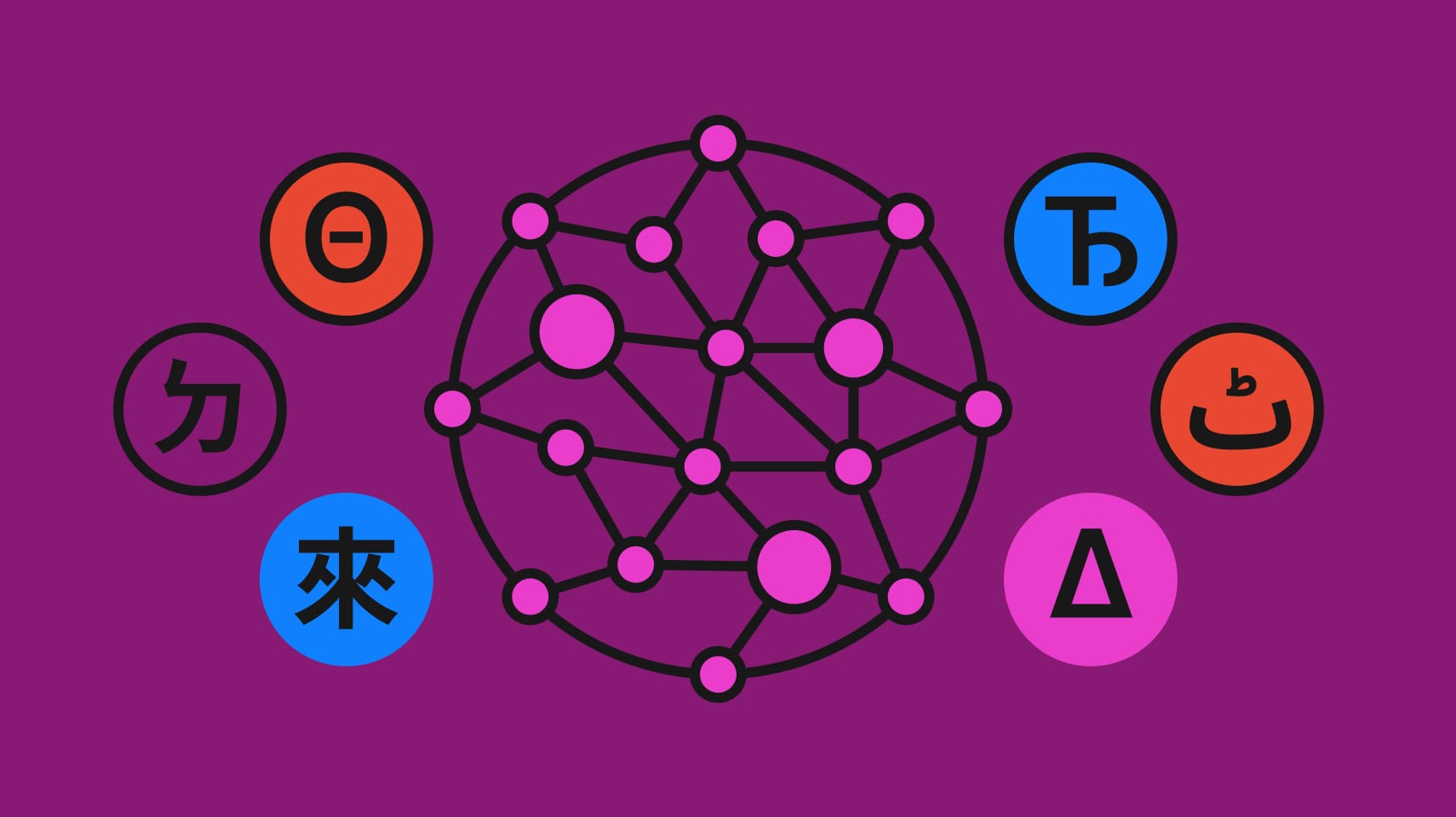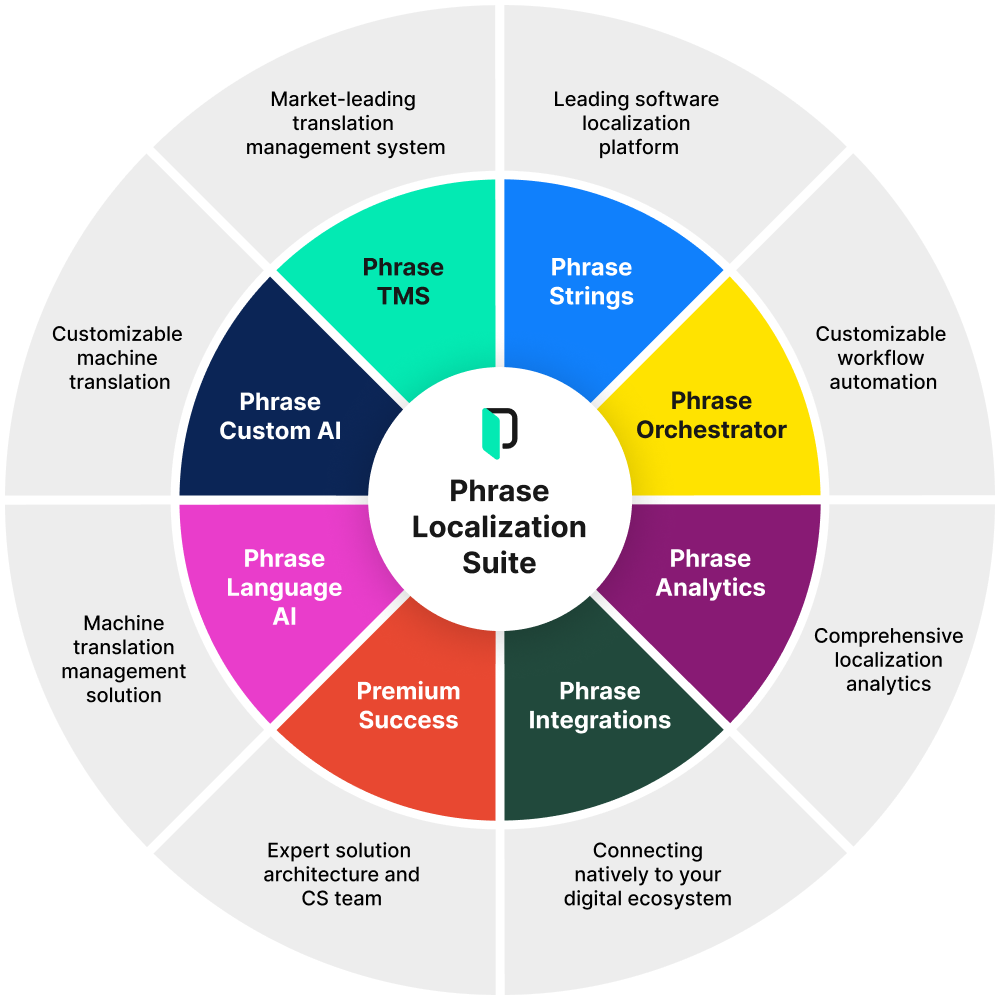Localization strategy
Faster, Higher, Stronger: How Tech Companies Can Thrive Globally Through Localization

In today’s fast-paced tech world, the belief that only industry giants can dominate the global market is as obsolete as floppy disks. With global connectivity and advancing technology, localization emerges as a savvy strategy for any tech company eyeing international expansion. A nuanced outlook on market dynamics levels the playing field, offering businesses of any size an opportunity to strengthen their global presence.
By integrating translation and localization capabilities into your digital ecosystem, you can outpace competitors who may be slower in adapting to global dynamics. This provides the flexibility to pivot effortlessly from one market to another. Keep reading to discover how a solid localization strategy can help you adapt your products and services to user preferences worldwide and drive growth for your business.
The power of localization to drive global tech growth
With personalization, customization, and individualization reshaping product strategies globally, tech visionaries are increasingly embracing localization as a key growth catalyst. This shift prompts them to rewrite the rules for their teams, pushing products beyond being cutting-edge and tailoring them uniquely to each user’s needs.
| Localization benefits for growing tech organizations | |
| Enter new markets faster and easier, with less risk: Localization facilitates swift and low-risk entry into new markets by addressing language and cultural differences, streamlining the expansion process for tech companies.
Grow their competitive advantage over rivals who neglect localization: Companies gain a competitive advantage by tailoring products to local needs. Prioritizing localization enhances market positioning and outperforms rivals who neglect this crucial aspect. Increase customer satisfaction across locales: Localization not only ensures relevance but also elevates overall customer satisfaction. Understanding local contexts fosters a positive connection, contributing to sustained customer loyalty. Increase sales and customer loyalty in new markets: A localized approach aligns with local preferences, increasing sales. Tailored experiences demonstrate a commitment to meeting unique market needs, building trust and brand allegiance. Experience longer customer lifetime value (CLV) in each target market: Investing in localization nurtures long-term customer relationships resulting in an extended customer lifetime value as satisfied customers continue to engage and support the company over time. |
However, soon after starting, many organizations discover that their current strategy, workflows, and technology struggle to meet the ongoing need for multilingual content. In simpler terms, it’s not enough to launch your product or service in a new market and hope for the best. The key to success is to incorporate localization best practices into your global expansion strategy right from the start.
Best practices for deploying localization as a lever for growth
To get a hands-on understanding of the challenge, we’ve looked into the success stories of some of the most innovative tech companies globally and compiled their best practices for utilizing localization to drive growth—from flexible coding and strategic text string handling to adaptable design, rigorous testing, quality assurance, and maximizing cloud localization tech. Let’s delve deeper into each of these elements.
Flexible coding: Unlock your product’s global potential with Unicode
Before you type the first line of code, consider the 2 fundamentals of making your product global-ready: character encoding and decoupling all translatable elements (e.g., text, images, etc.) from your code. Here’s why both are must-dos and can be enormous time- and cost-savers further down the line.
Character encoding
In software development, incorporating Unicode is akin to handing your product a multilingual passport—you open the door to taking it globally without hiccups, such as breaking characters or compatibility issues. These can be literal show-stoppers, preventing the seamless functioning of your product. To avoid such problems, adopt widely accepted character encoding standards such as UTF-8, which supports a broad range of characters and is compatible with various platforms.
| Integrating character encoding into software development in 5 key steps | |
| Use UTF-8 and ensure all input and output handling within your codebase adhere to this chosen encoding standard.
Conduct thorough testing to validate proper data encoding and decoding, checking for potential display, sorting, and searching issues. Document encoding practices in your development guidelines and educate team members on their importance. Employ automated tools and code reviews to enforce adherence to encoding standards throughout the development lifecycle. Regularly update and review encoding practices to stay aligned with industry standards and best practices, minimizing the risk of compatibility issues and enhancing the overall reliability of your software product |
Decouple all localizable elements from your code
Consider this: The linguists who will eventually translate the product aren’t necessarily developers, so they will likely need help distinguishing code from translatable text. That’s why it’s imperative to separate all localizable elements from the code and create resource files for translation.
Here are 3 reasons why you should do so:
- Developers know the code part and what should be translated, while even the best translators can only guess what is what. It can result in potential mistranslations or altogether missed translations.
- Save time & cost. For example, isolate text embedded in an image before the file goes into translation. Translating text will be quicker—and cheaper—than redrawing the image.
- Simplify management of different language versions with resource files. Multilingual files may be easy to work with for your programmers, but they may pose a challenge when you ask different translators to work on them simultaneously—and when the countdown to product launch is inexorably ticking, that is a likely scenario.
Be strategic with text string management: Context is everything
Localization involves more than just translating words from one language to another. There are so many factors that make your content shine—the quality of the writing, the suitability of references you use for a multilingual and multicultural audience, etc.—and you will be entirely reliant on your linguists or language service providers (LSPs) to provide the linguistic and cultural knowledge to create memorable user experiences.
Now, the last portion of the sentence may not be 100% true––while your desired outcome will be an error-free translation, you should maximize the chances the translators you work with will get it right the first time (the negative cost or brand image implications should you fail to do so are apparent). You certainly are not powerless in this regard and translators would benefit from a roadmap to navigate the intricacies of your software—context is everything.
These 3 tips help you get the most accurate and impactful translation for your buck:
- Enable access to the software for translators where possible. If that is not an option (e.g., for security reasons), provide accompanying visuals and documentation access that elaborate on the strings’ intended purpose.
- Modern localization technology offers a slew of contextual options for translators. Selecting the right translation management system (TMS) as a central place for orchestrating entire localization workflows can work wonders for accuracy.
- Moreover, such technology offers many options for translators to interact directly with developers, greatly enhancing collaboration and perpetuating the virtuous cycle of better communication › more context › more accurate translations.
Localization is, above all, a collaborative process. By having your product developers working with the localization team (whether internal or external), reap the benefits of an effective workflow that will produce excellent translations and streamline the quality assurance process.
What is a translation management system?
Learn what makes a translation management system and how it helps businesses seeking to expand globally translate content more quickly and efficiently.
Adapt your design to craft a universal user experience
The impact of translation on design and layout is often underestimated. Consider the following areas where user experience (UX) intersects with design and translation:
- Different languages have different lengths. Developers should allow for text expansion when designing the user interface (UI)—allowing up to 60% more space to accommodate translations and not see key functionality affected or CTAs break.
- Not all languages read from left to right. Some scripts—such as Arabic or Hebrew—are written from right to left (right-to-left or RTL languages). Other languages, such as Chinese or Japanese, have been traditionally written top to bottom. It has implications for how the UI is set up—it needs to be mirrored.
- Consider more than just language. When designing for a global audience, prioritize usability and inclusivity. Ask yourself: Is my product accessible to everyone, including those with disabilities or impairments? Your answer will likely influence how you approach UI design.
These are all areas of UX localization you will want to consider, ideally during the early stages of product development. If you’re feeling stuck, reach out to your partner LSP or work with in-market specialists who can help guide you on the local usage or what is acceptable (and what isn’t). Even better—onboard them into the design process.
In essence, you should create your product with localization in mind. It will allow you to develop products that transcend language and culture boundaries, ensuring your application looks as good—and offers the same memorable experience—in Tokyo, Kathmandu, or New York.
Devise a testing and quality assurance process for excellence—and for returning customers
Before hitting the global launch button, plan for a meticulous localization quality review pass. Spending time testing the product ensures it is error-free from a technical and linguistic perspective and delivers an outstanding experience to end users.
Responsibilities of engineering and linguistic teams encompass the 4 following areas of testing:
- Functional testing: Evaluating software performance, code compatibility, and layout functions.
- Compliance testing: Navigating regional regulations to steer clear of legal complexities.
- Linguistic testing: Validating translation accuracy, grammar, and cultural compatibility.
- Visual testing: Ensuring a seamless user experience through thoroughly reviewing visual elements.
In an ideal scenario, you will have sufficient time before the product launch to devise a testing plan that addresses the above areas. The reality may be more complex, with time and cost being frequent hurdles that force teams to pick where they can move the needle the most. That’s why one of the best—and most cost-effective—QA strategies is to get your product global-ready from the start via internationalization (i18n).
Think of the QA phase as the final dress rehearsal before the grand global premiere—a guarantee that your product will shine on any stage it graces.
Leverage cloud localization technology
Localization technology will be your neural hub for devising efficient localization and translation processes. At the same time, humans concentrate on where they add the most value—their subject matter expertise, ability to validate content, and intimate knowledge of what works and what doesn’t in any given market.
Here’s why localization technology is indispensable for any tech company with global ambitions:
- Centralizing resources via a TMS streamlines workflows, automating tedious tasks associated with traditional translation processes such as sending files for translation, manually assigning jobs to linguists, or checking strings with Collins dictionary open in another tab.
- Localization technology frees people to concentrate on projects requiring a human touch and showcasing their creativity, such as transcreating marketing collateral.
- A TMS is a central repository for all your company’s terminology, ensuring consistency across translations. In addition, it offers automated quality assurance check functionality. You will want a single source of truth for content-related queries where you can perform your QA—a TMS can serve in a pinch.
- Using a central hub for everything localization-related works wonders for collaboration. A TMS integrates with all the components of a company’s tech stack, allowing developers, marketers, and linguists to collaborate in real-time, enabling access to much-valuable context and strengthening ties.
Unlock global growth with the Phrase Localization Platform
It’s possible to get all of the above—and more—from the Phrase Localization Platform. An integrated suite of translation automation technology, Phrase is the complete localization solution for streamlining and optimizing the entire translation process in one place.

Phrase seamlessly connects with your digital ecosystem, catering to your current needs while scaling effortlessly as your requirements evolve. Add fully flexible pricing, and it’s easy to see why Phrase is the preferred choice for tech firms looking to expand the global footprint of their business more quickly:
- Streamline manual or repetitive translation tasks through smart automation.
- Centralize files and orchestrate entire translation workflows in a unified, cloud-based localization suite designed for the unique needs of marketing teams.
- Facilitate seamless collaboration among team members spanning different time zones.
- Unlock the combined potential of established translation technology, incorporating CAT tools, along with the advanced capabilities of AI-powered machine translation.
- Send your content for translation and import it back into your product using familiar file formats.
- Offer valuable context for linguists by adding screenshots or comments to translation strings.
- Allow linguists to review their work in its native format with real-time changes through an in-context preview.
- Leverage out-of-the-box integrations with your preferred software platforms.
- Rely on a holistic approach to data security and encryption through a robust information security management system.
Speak with an expert
Want to learn how our solutions can help you unlock global opportunity? We’d be happy to show you around the Phrase Localization Platform and answer any questions you may have.





